Scrumptiously soft and fruity, this simple Turkish quince dessert is a delicious way to complete a meal. Here’s how I make ayva tatlısı at home.
If you’ve been to a traditional restaurant in Turkey during winter time, chances are you’ve come across ayva tatlısı. It literally translates as “quince dessert” and makes precious use of that seasonal ingredient.
Quince in Turkish cooking
If you’re not familiar with quince, it’s a fruit reminiscent of a large, clunky pear in appearance.
A good quince has a beautifully sweet scent, but is hard to the touch with a woody texture and mildly tart flavour similar to green apples (but weaker flavour). It’s probably no surprise they’re rarely eaten raw.
Cooked, however, the quince turns deliciously soft and sweet. The wooden texture disappears and the flavour intensifies and turns sweet and fragrant.
Leave the seeds in while cooking, and the quinces will also be dyed a beautiful shade or two of red.
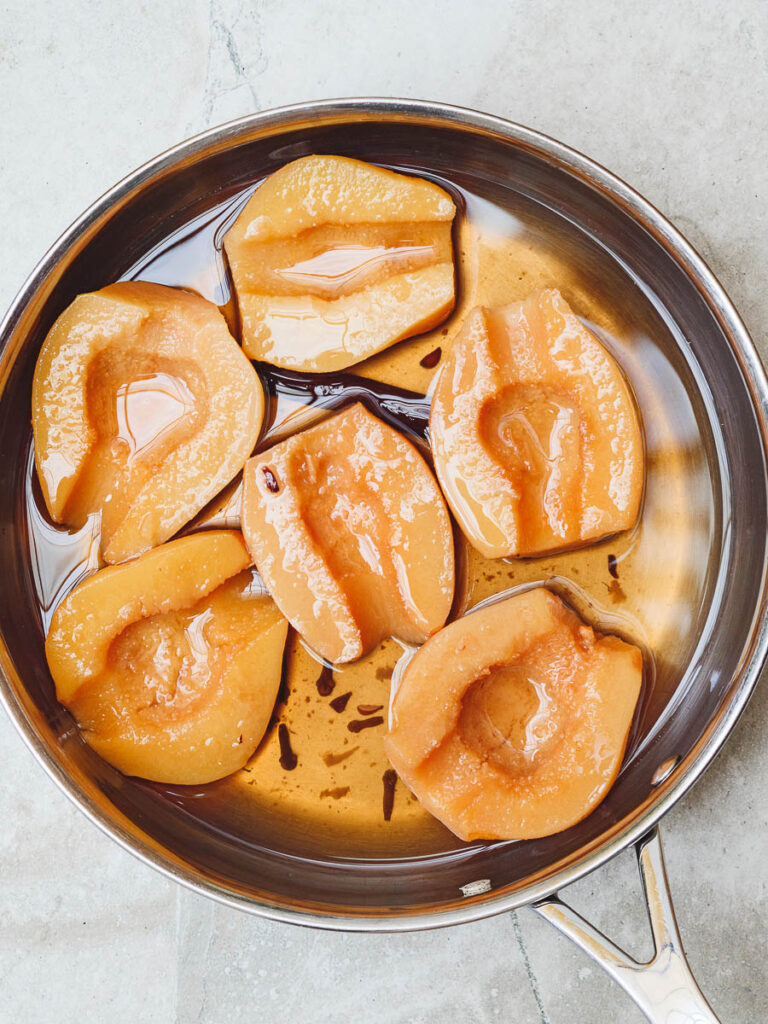
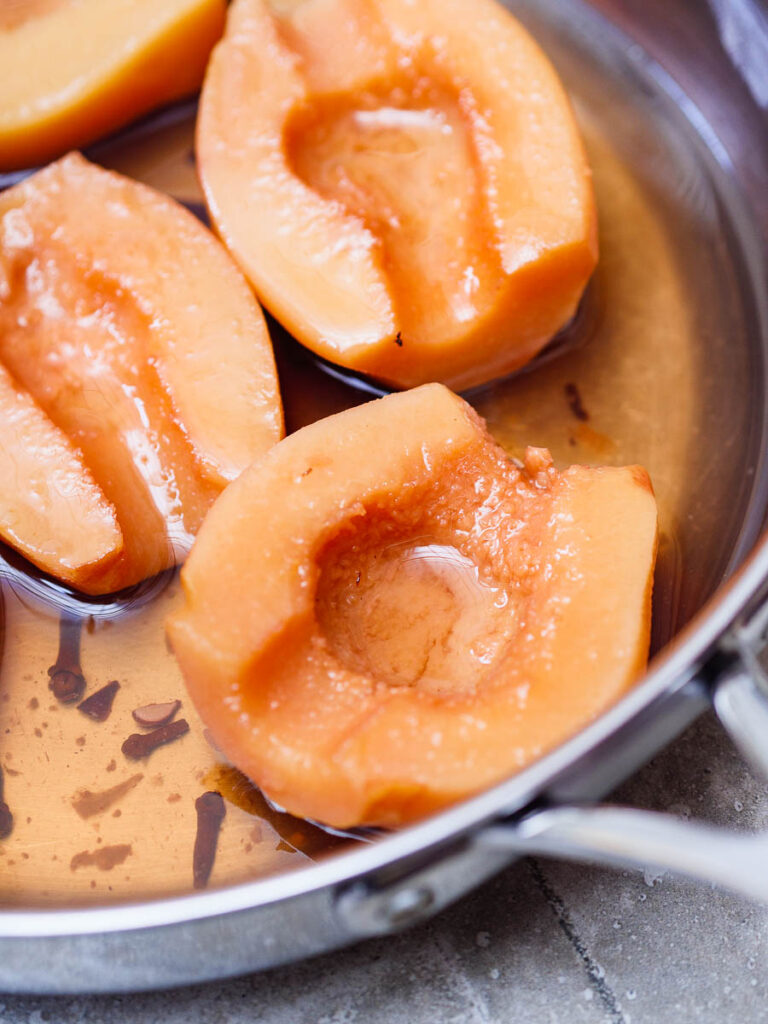
In Istanbul, you’ll most often quinces halved and cooked to perfection in a sweet syrup, served with kaymak (Turkish clotted cream) and chopped pistachios. One of my favourite wintertime treats!
Although Turkish cuisine often has one overwhelmingly popular use of most ingredients, quince isn’t one of them. The first time I checked my Turkish cookbooks for recipes for the Turkish quince dessert I was craving, most of them in fact left me none the wiser.
Instead, they were filled with savoury dishes pairing quince with lamb in various ways. Stuffed, as part of a stew, or even a key ingredient in a bake. These dishes appear to be mostly popular in the Southern and Eastern parts of the country.
Not surprising, as this use of quince is also popular throughout the Middle East, probably stemming from the Iranian use of fruits in stews. But also a little surprising, as most Turks I’ve met despise the addition of sweet elements to savoury foods. (Though there are exceptions, like the raisins in Spiced Turkish rice/iç pilaf).
Anyway, back to the dessert at hand.
How to make Turkish quince dessert (ayva tatlısı)
While all it takes is a few simple ingredients, there are in fact many ways of making ayva tatlısı.
For example, some like to leave the quinces in plenty of sugar for 24 hours or so before cooking, others cook it straight away. Some use the oven for the cooking, others braise them over a low heat in a lidded pan.
Depending on the methods used, the resulting quince may vary from near candied to a softer texture more akin to poached pears.
Personally, I only really started enjoying this Turkish quince dessert after making my own at home. Where restaurants often opt for the sturdier texture, I prefer mine deliciously soft.
Whatever your approach, there are three key things to ensure a good result.
First, and this perhaps goes without saying, you should use a fragrant quince in season. This is a dish with very few ingredients, so the quality of your main ingredient is vital.
Second, make sure to peel and core the quince properly. Pay particular attention to the coring, as you may need to remove more than you think to avoid any woody bits being left after cooking.
Bonus tip: Make sure to put the seeds back in after coring. They shouldn’t be eaten, but will colour the syrup (and quinces) a beautiful orange/red during the cooking process.
Finally, keep the cooking process low and slow. This ensures a perfectly cooked and deliciously smooth texture.
Serving suggestions and substitutions for ayva tatlisi
Turkish quince dessert is traditionally served with a generous topping of kaymak and chopped or ground pistachios.
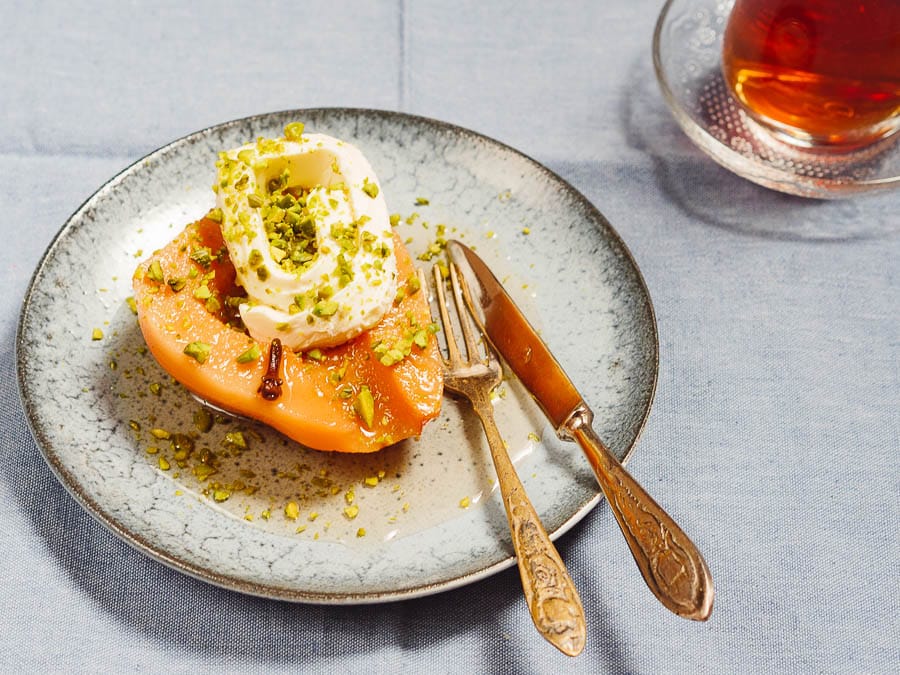
Kaymak is a Turkish cream so thick it’s spreadable, similar to clotted cream. It can be difficult to get hold of outside the country. Clotted cream is a great substitute.
If you can’t find either, vanilla ice cream or even whipped cream is a delicious alternative.
The pistachios are important not only for flavour and texture, but also for a splash of colour. However, if you can’t access them where you are, another nut such as walnut or hazelnut would also work.
Each quince half makes for one portion. Though if your quinces are small, some may want a second bite too!
This recipe serves 8-10, and leftovers keep for days in the fridge if kept in a clean, sealed container along with the syrup. Note that kaymak/clotted cream has a short shelf life, so if you’re keeping the quinces for a few days, you may need to replace the kaymak/clotted cream.
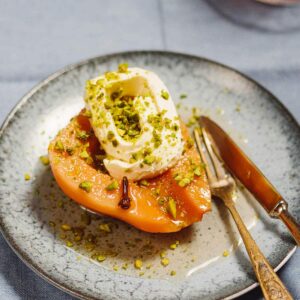
Turkish quince dessert (Ayva tatlısı)
Ingredients
- 1 kg quince
- 200 g sugar
- 8 whole cloves
- 1 small cinnamon stick
- 200 g kaymak, or clotted cream, to serve (see notes for alternatives)
- 1 handful pistachios (unsalted), chopped
- water
How I make it
- Peel the quinces and slice them in half. Remove the hard core, but keep the seeds. Make sure you remove all the hard bits running through the middle, as these will never completely soften during cooking.
- Add the quince halves, quince seeds, sugar, cloves, cinnamon stick and 500 ml (2 cups) water to a wide, shallow pot. Bring to a boil, then lower the heat to low. Cook covered until the quinces are soft and the liquid has turned slightly red, 1-1½ hours. Turn the quince halves carefully from time to time to make sure they cook evenly, and add more water if necessary. Take off the heat and leave to cool completely.
- Serve topped with kaymak or clotted cream and pistachios (or see notes below for alternatives).


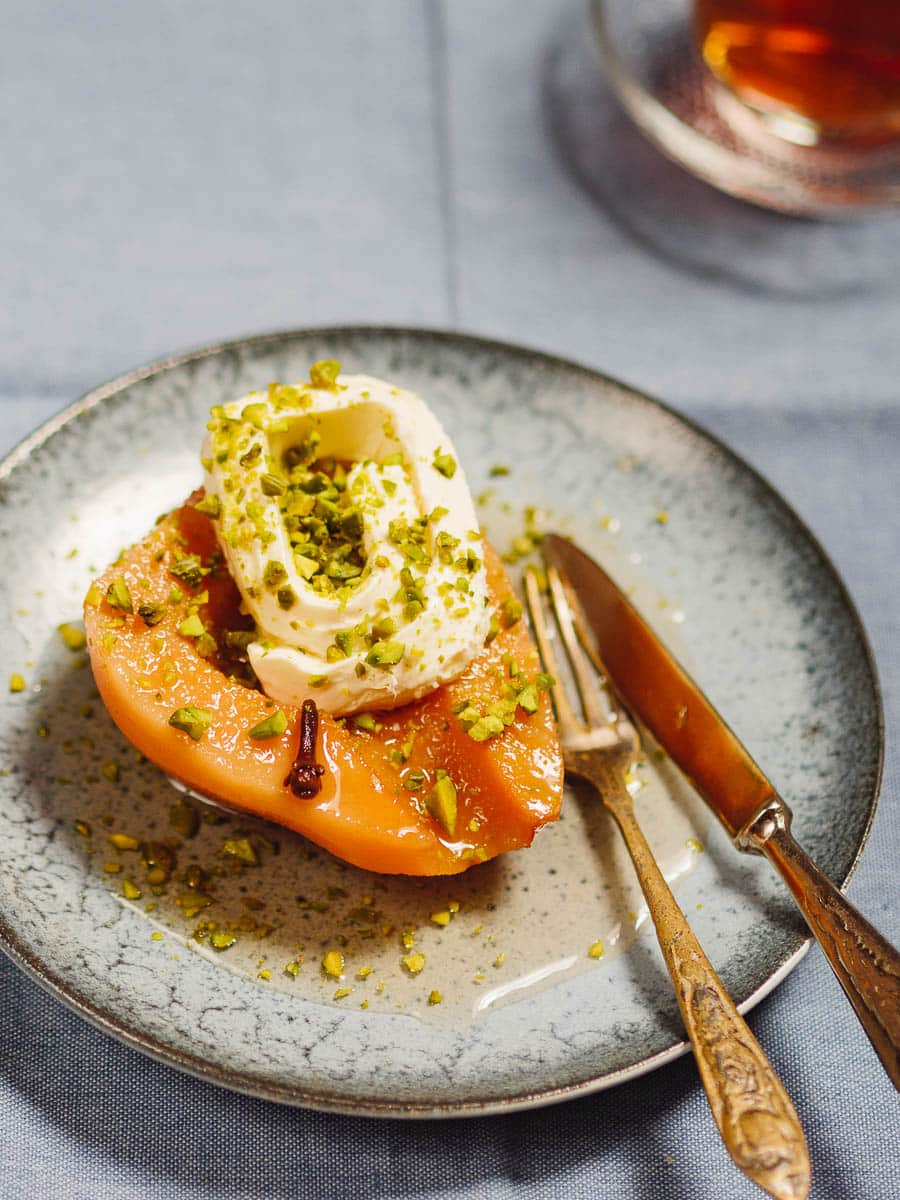
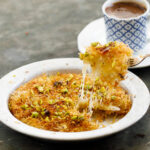


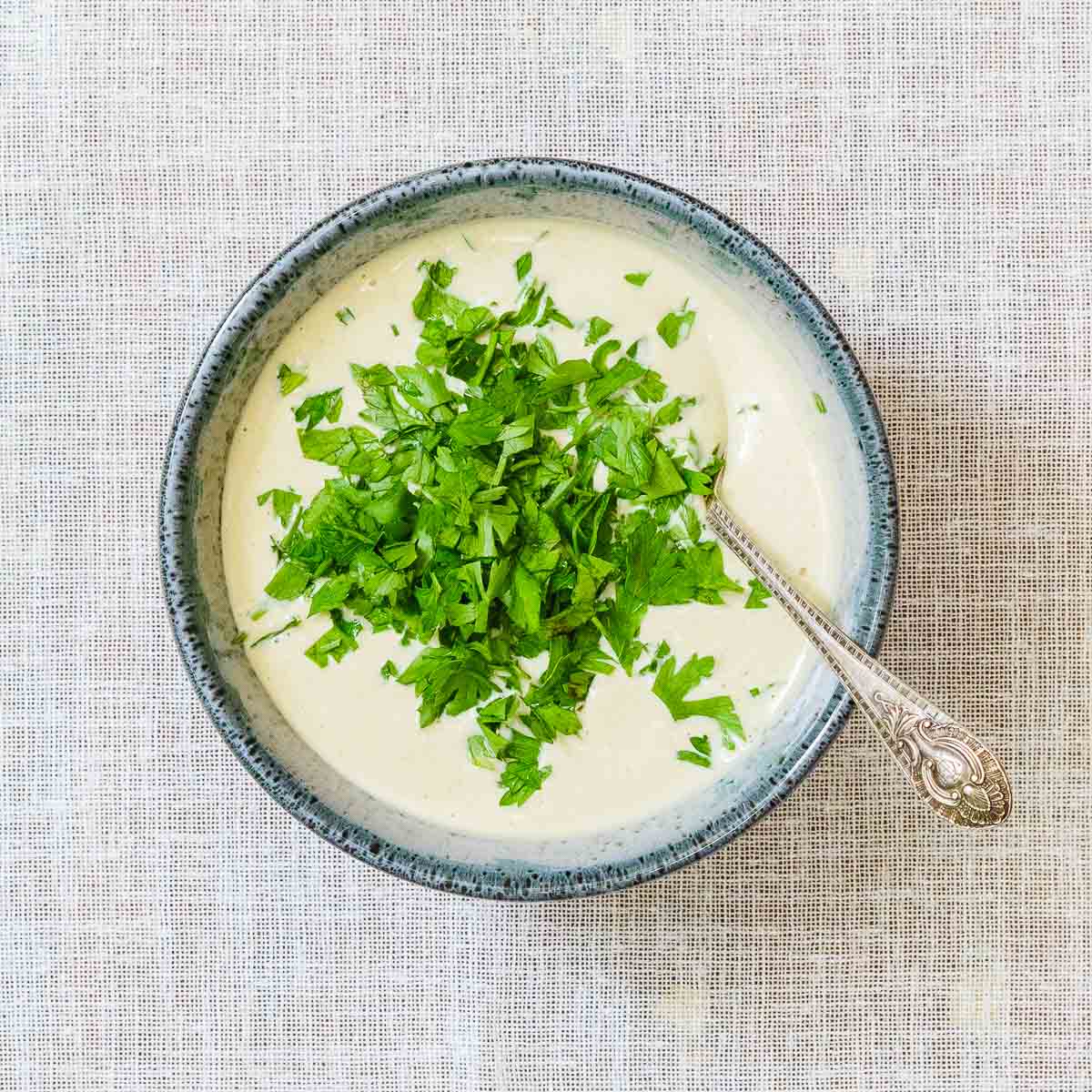
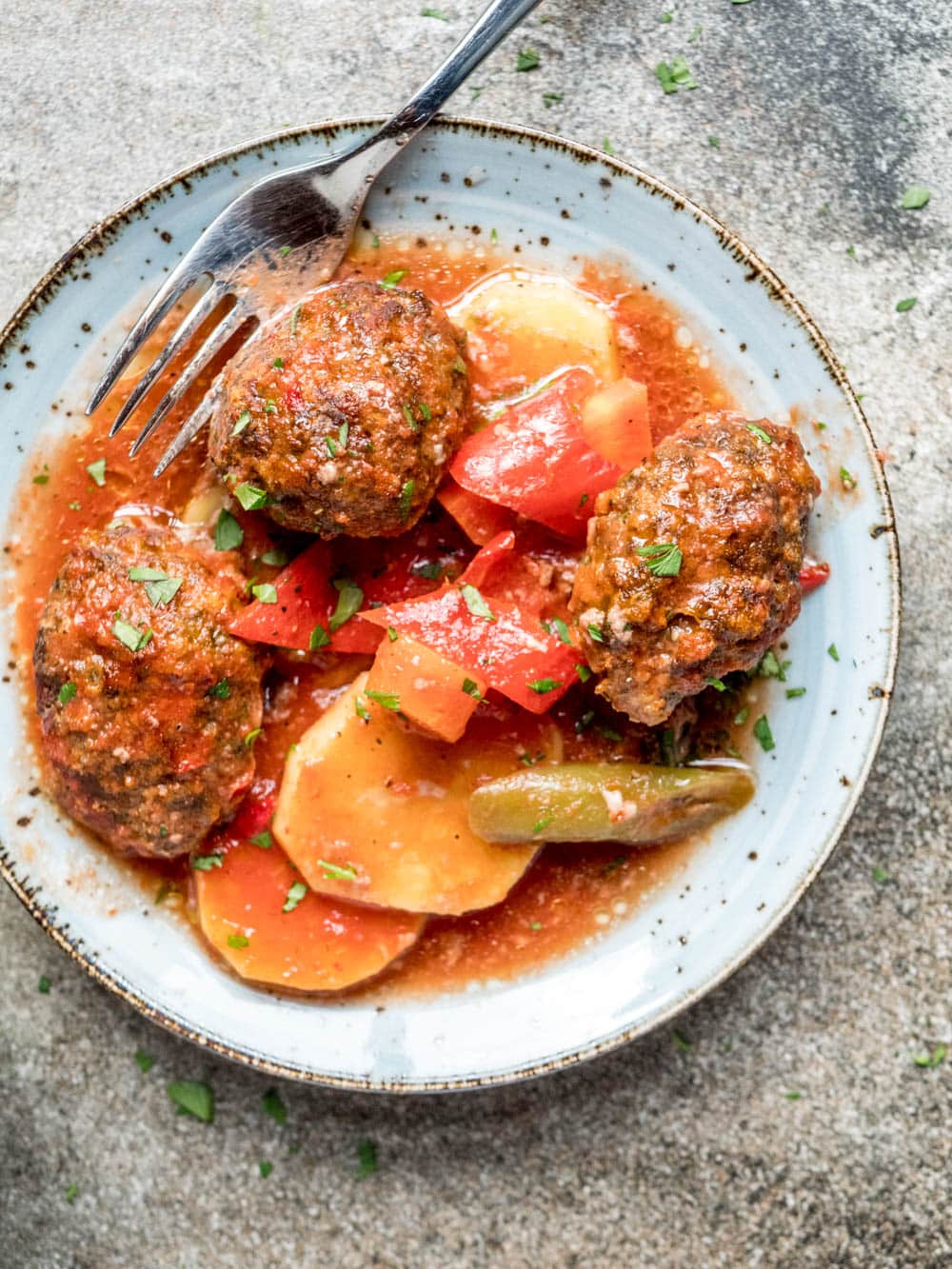
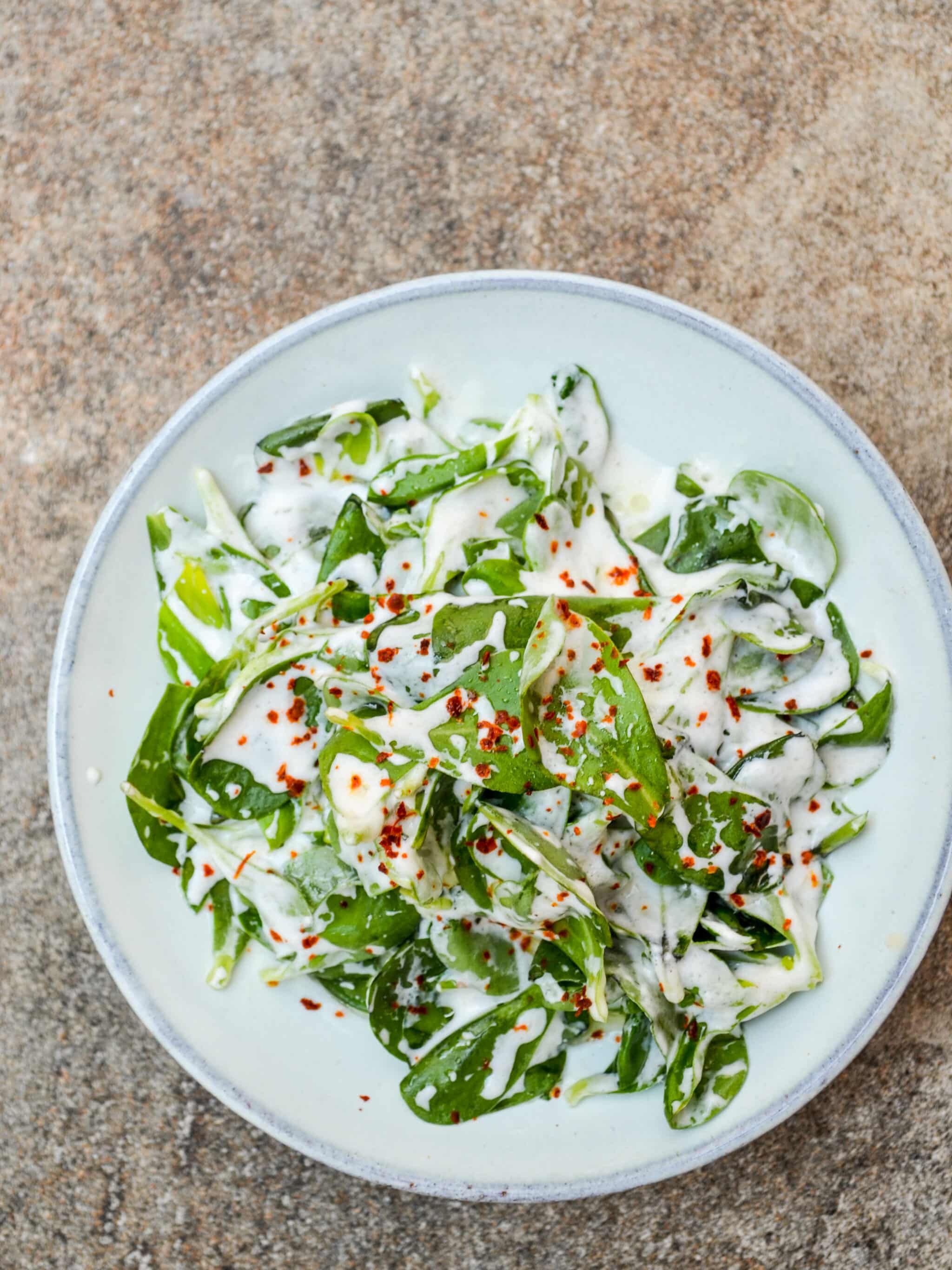
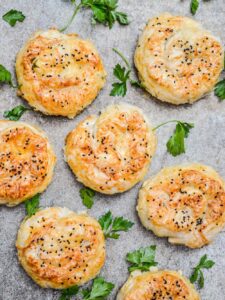
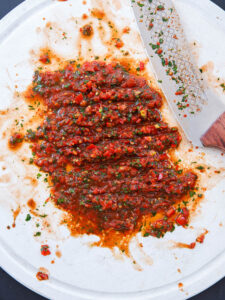
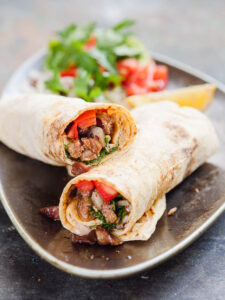




3 responses
I know ayva tatlısı only from restaurants and not from my friends at home when I visit Turkey. But the colour is more red/purple.
I have seen shorts on youtube where it seems to be prepared with some red syrup. Is that nar şerbet aka pomegrenade syrup?
There are various ways of making it red, but most of them involve directly or indirectly (through the form of a sherbet) using red food colouring. I prefer mine natural and also happen to think they look more appetising this way. They do take on a red hue from the seeds (the pictures here don’t do it full justice – they are actually a little more red-ish than they look in the photos), but nowhere near the completely red ones you find in many restaurants.
Thank you, thank you, thank you! You continue to be a wonderful resource and my first go-to for Turkish recipes.